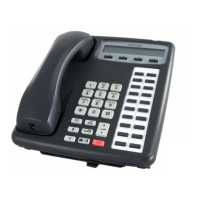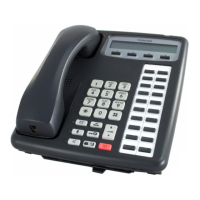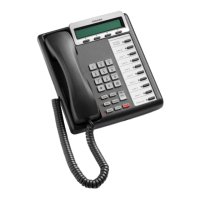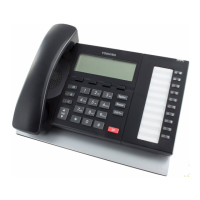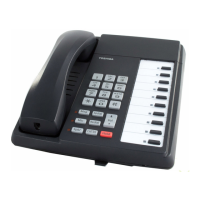Do you have a question about the Toshiba Strata DK40 and is the answer not in the manual?
Outlines the manual's structure by chapter, covering programming, initialization, system, toll restriction, LCR, and ACD.
Explains the manual's improved format for easier programming, including legends and direct program information.
Details the conventions used in the manual, such as notes, important information, cautions, and warnings.
Lists other reference documents for the Strata DK system, including installation and user guides.
Provides a numerical list of Strata DK40 programs with their numbers, titles, and program types.
Lists features and topics with corresponding Strata DK40 program numbers for easy topic lookup.
Guides on filling record sheets and entering data using a 20-button LCD telephone or PC software.
Outlines general procedures for initial system installation or major hardware changes, including hardware checks and system initialization.
Initializes the system to default status, setting data for programs, speed dial, ports, and other configurations.
Clears customer data and initializes individual programs or ranges, crucial for system installation.
Assigns slot codes to installed PCBs and sets physical/logical ports to initialised settings, crucial after PCB installation.
Enables running various system checks, including ROM version, security codes, and power cycle counter.
Manages logical port assignments for telephones, allowing changes or display of associated physical ports.
Informs the system about installed optional PCBs and assigns codes to them within KSU slots.
Allows modification of feature access codes, enabling customization of dialling sequences.
Directs incoming Auto Attendant calls based on dialled digits to specific stations or ACD groups.
Configures system assignments for exchange line attributes like conference, ring detection, and speed dial.
Sets various timers for ACD call handling, including queue overflow, agent ring, and after-call work.
Specifies operational options for each Exchange line, such as automatic release and outgoing signals.
Controls feature enablement/disablement for individual telephones at the station level.
Assigns features to flexible buttons on telephones, allowing customization for individual users.
Allows or denies station access to exchange lines, controlling outgoing calls and toll restriction.
Assigns the level of restriction to each station port for day service, controlling outgoing call access based on defined classes.
Explains how to complete System Record Sheets for programming the Toll Restriction feature.
Screens and restricts outgoing calls, allowing programming for individual stations and different day/night service levels.
Analyzes dialled STD, International, or Local codes to allow or disallow outgoing calls based on defined criteria.
Ensures toll-restricted stations can dial special codes like 999/112 for emergency calls, overriding restrictions.
Allows System Speed Dial numbers to override Toll Restriction settings, providing flexibility for users.
Defines up to two codes to override station-specific toll restrictions, allowing users to change their class of service for calls.
Enables LCR features, including warning tones, comfort dial tone, and long distance dialling plan parameters.
Specifies LCR parameters like home area code, special codes, and information plan numbers for call routing.
Defines conditions for LCR, such as direct line appearances or pooled lines, and accommodates special codes like emergency numbers.
Provides instructions for completing System Record Sheets used to program LCR, defining route plans and call routing definitions.
Defines general operating parameters for LCR software, including enabling the system, speed up, and warning tones.
Specifies PIOU or PIOUS ACD/MIS Slot Assignments, crucial for MIS output and configuration data.
Directs incoming Auto Attendant calls based on dialled digits to specific stations or ACD groups.
Configures three system options for ACD Groups and Agents, including routing algorithms and supervisor monitoring.
Sets various timers for ACD call handling, including queue overflow, agent ring, and after-call work.
Assigns loop start Exchange lines to directly ring a designated ACD Group for call distribution.
Specifies operational options for each Exchange line, such as automatic release and outgoing signals.
Controls feature enablement/disablement for individual telephones at the station level.
Assigns ACD Agent and Supervisor buttons to telephones, allowing customization of button functions.
Illustrates the process of routing Exchange line calls to ACD groups, covering various scenarios like agent availability and overflow.
Auto Attendant (built-in or external) acts as an automatic operator directing incoming callers via dialling prompts.
Automatic Call Distribution distributes incoming calls to ACD agents, displaying agent and group info for supervisor monitoring.
Toshiba's software for database programming and upload/download for Strata DK systems.
Strata DK system hardware circuits connecting to the Local Exchange network, assigned an exchange line number.
Least Cost Routing.
Informs the system about installed optional PCBs and assigns codes to them within KSU slots.

